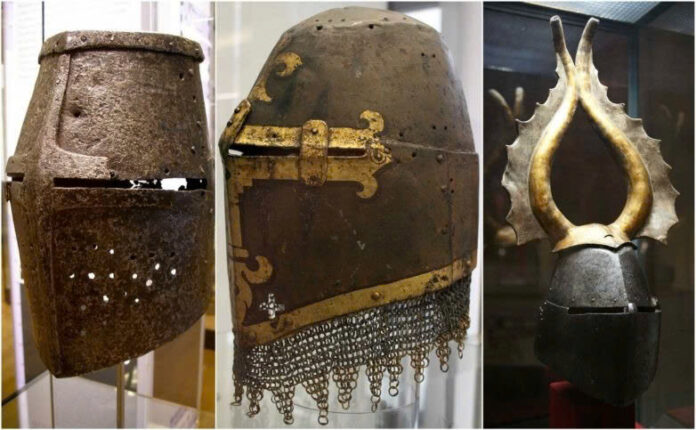In the mist-shrouded battlefields of medieval Europe, one piece of armor stood as the ultimate symbol of knightly prowess – the Great Helm. This formidable headpiece, known by various names including the Heaume, Barrel Helm, Bucket Helm, and Pot Helm, dominated the warrior’s arsenal for over two centuries, from the late 12th to the 14th century.
The Birth of a Legend
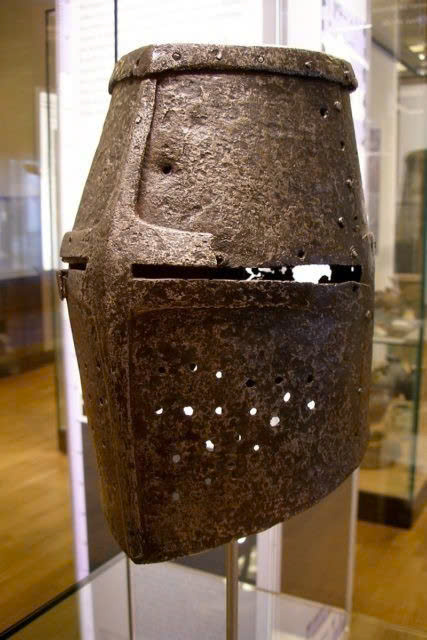
The Great Helm emerged during the tumultuous era of the Crusades, when European knights faced new challenges on distant battlefields. Born from necessity and forged in the fires of conflict, this cylindrical fortress of steel represented a revolutionary leap in head protection. Unlike its predecessors, the Great Helm completely encased the warrior’s head, leaving only narrow eye slits and occasionally a mouth opening to connect the wearer with the outside world.
Early Development and Design Evolution

The journey of the Great Helm began around 1180 AD, evolving from the simpler nasal helmet. The initial flat-topped, square-shaped design gradually transformed into something more sophisticated. By the end of the 12th century, armorers had developed what historians call the “first Great Helm” – a transitional design that expanded nasal protection while introducing a full faceplate with breathing holes.
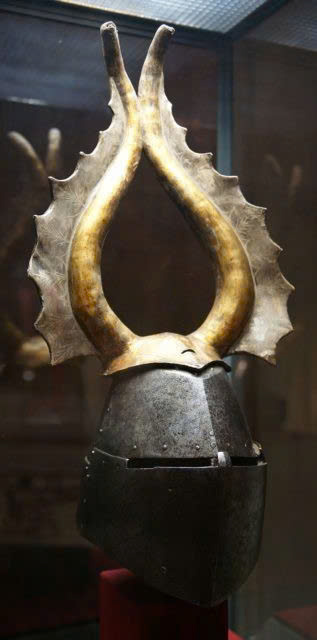
This early version, however, was merely the prelude to the true Great Helm that would dominate battlefields around 1240 AD. The most significant advancement came with the introduction of rounded tops, particularly the pointed variant known as the Sugarloaf Helm. In Spain, these were called “Yelmo de Zaragoza,” named after the city of Zaragoza where they first appeared on the Iberian Peninsula.
The Warrior’s Burden: Protection vs. Practicality

While the Great Helm provided unparalleled protection compared to earlier helmets like the Nasal Helm and Spangenhelm, it came with significant drawbacks. The cylindrical design severely limited peripheral vision, creating dangerous blind spots in combat. The weight of the helmet was substantial, and the flat-topped versions without proper ventilation holes created stifling conditions that could quickly exhaust a warrior in hot weather.
The Layered Defense System
Medieval knights didn’t simply don the Great Helm alone. Beneath this imposing headpiece lay a complex system of protection. First came the chain mail hood, often covered by a cervelliere – a close-fitting iron skullcap. Later innovations included the bascinet, which offered enhanced neck and shoulder protection while still fitting comfortably under the Great Helm.
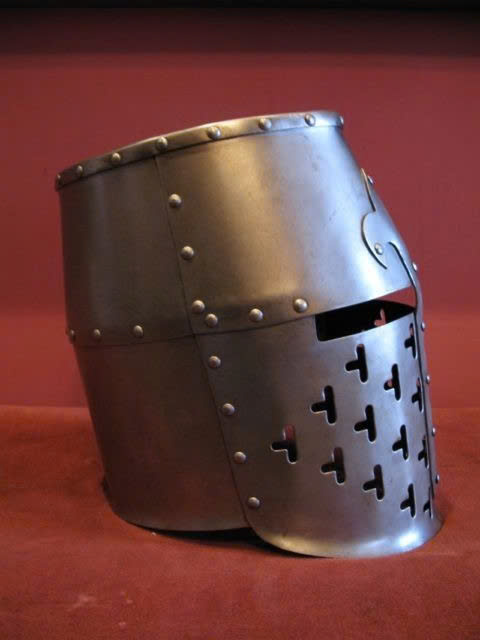
The evolution continued with the introduction of the camail or aventail – a chain mail curtain attached to the bascinet that eventually made the traditional coif obsolete. When plate gorgets appeared around 1400 AD, even the chain mail throat protectors became outdated.
Video
Combat Adaptations and Tactical Use

The Great Helm’s design influenced medieval combat tactics significantly. Knights would often wear the full helmet during the initial charge with lances, benefiting from maximum protection. However, once the melee began, many would remove the Great Helm to gain better vision and mobility for close-quarters fighting, relying on the underlying bascinet for protection.
The Tournament Legacy

As battlefield utility declined in the 15th century, the Great Helm found new life in the tournament grounds. Here, it evolved into specialized forms, including the distinctive “frog-mouthed” tilting faceguard designed specifically for jousting competitions. This tournament variant represented the final chapter in the Great Helm’s long history, preserving its legacy even as warfare moved toward different protective solutions.
The End of an Era
By the 15th century, the bascinet had evolved sufficiently to replace the Great Helm in most combat situations. The once-mighty helmet that had protected countless knights through the High Middle Ages gradually faded from active military use. Yet its impact on medieval warfare and culture remained profound, representing an era when personal armor reached extraordinary heights of both protection and craftsmanship.
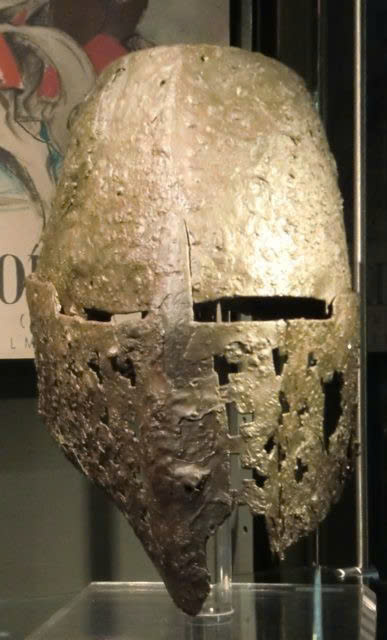
The Great Helm stands today as a testament to medieval ingenuity – a perfect balance of form and function that defined an age of chivalry and warfare. Its surviving examples in museums worldwide continue to inspire awe, reminding us of the warriors who once trusted their lives to these magnificent steel guardians.
